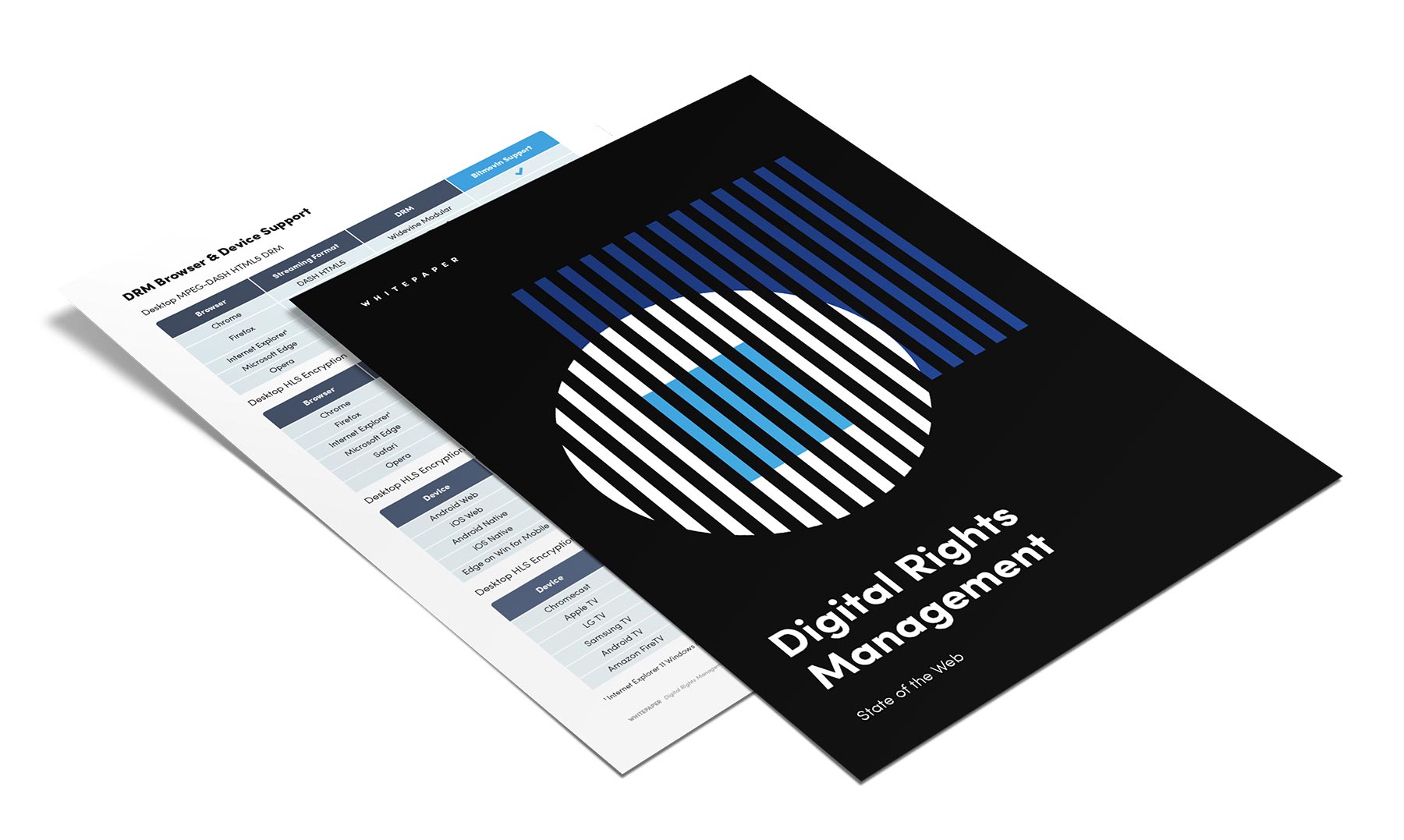Bitmovin's drm Whitepaper
Digital Rights Management (DRM) Whitepaper

This whitepaper is a comprehensive overview of the definitions, technologies, & processes that you need to know when considering your content protection options and preparing your videostack for scale. Learn what it means to control how and where people consume your video content online. Hollywood-grade protection is important, but not necessary for every distributor - download our EBook to learn what you need.
What you'll find inside:
Basics & Terminology - DRM definition, encryption schemes & methods, & more!
How does DRM affect playback on different devices?
Content protection online vs offline
A general (application-agnostic) DRM workflow